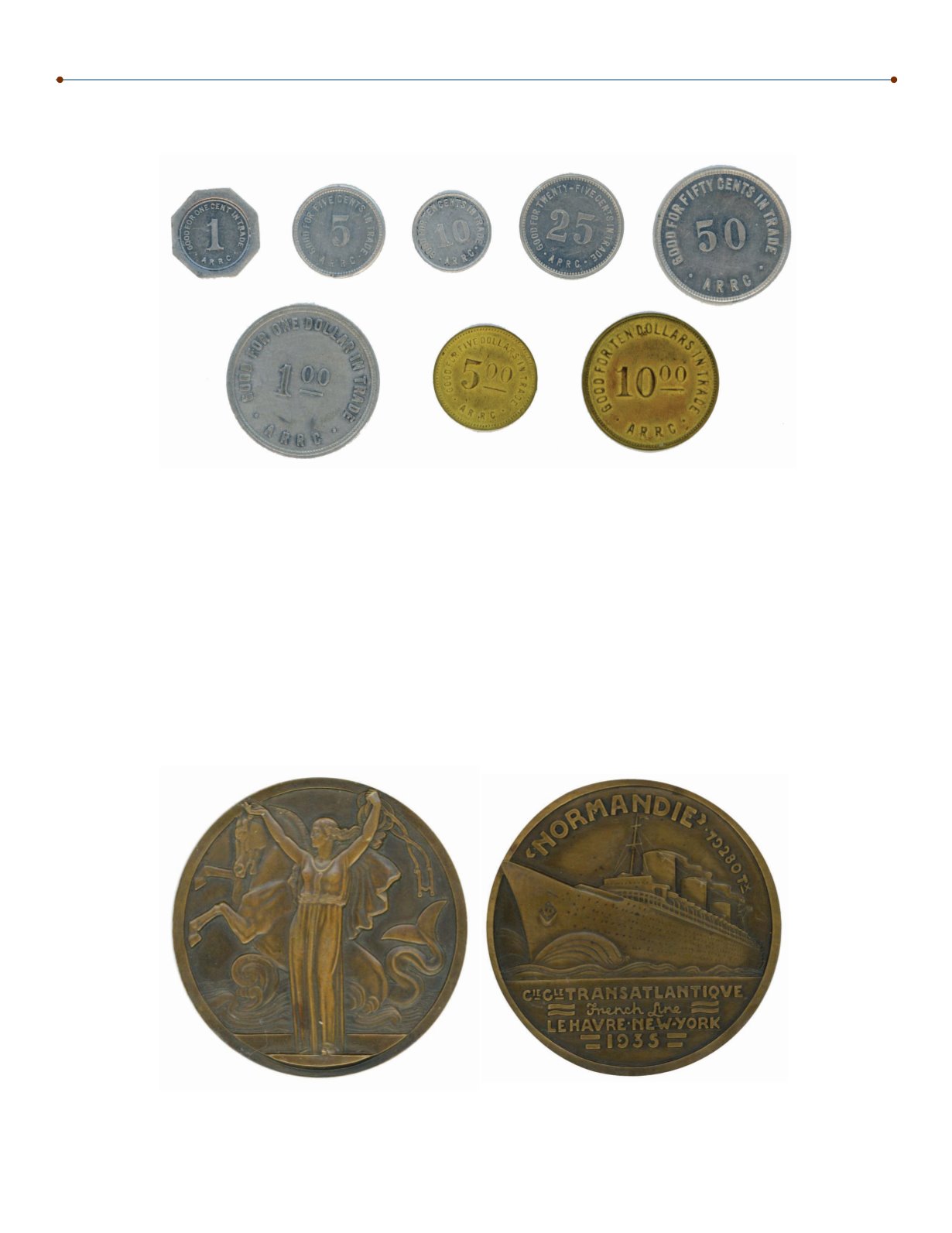

H
104
Miscellaneous Tokens and Medals
inscription evidences, It has sometimes been used as a presentation piece to honor some particular courageous conduct. This is the first example
we have had that has been so presented. We even know of an instance where it was inset in the tombstone of a young man who courageously
persevered through many years of a debilitating illness. (F-G)
439.
SET OFALASKA RURAL REHABILITATION CORPORATION TOKENS, 1935.
Palmer 1A through H. A complete set of eight from
the 1¢ through the $10 token. THE 1¢, 5¢, 10¢, 25¢ and 50¢ aluminum tokens are all PL Unc. with light hairlines. The $1.00 token is a PLAU.
The $5 and $10 brass tokens are both AU.
These tokens were issued by the U.S. Government for the use of the new settlers of the Matanuske Valley Colonization Project in Alaska.
A government store was built, but it was soon discovered that the colony did not have enough money and so the government issued these
tokens as a form of welfare. Each token is the size of the corresponding U.S. coin with the exception of the one cent piece which is octagonal.
8 denominations were struck. The first six were struck in aluminum in the following quantities: 5,000 each of the 1, 5 and
10 cent tokens; 3000 of the 25 cent token and 2500 each of the 50 cent and 1 dollar tokens. 1000 tokens each were struck
in brass in $5 and $10 denominations. They were redeemable only at the store and were in use only for about six months during 1935-
6, after which they were redeemed for regular U.S. money and destroyed with only 200 sets preserved for sale to collectors. The tokens were
nicknamed “bingles” in honor of Rev. George Bingle, who founded the Valley churches and was helpful in many ways to the whole colony.
In 1985, the original dies were used to strike sets of commemorative bingles to celebrate the 50th anniversary of the colony. They are easy to
spot because instead of being stamped with two identical sides they have a reverse side that reads: “Matanuska Valley Alaska, Colony Project
50th Anniversary, 1935-1985.” ($800-1000)
Lot 439
440.
THE OCEAN LINER, NORMANDIE, 1935.
68.5mm.
Bronze. Jean Vernon, Sc. (Paris Mint). Choice AU. Obverse
with a standing female figure of Normandie with her hands
upraised in front of a prancing horse with the tail of a fish. The
reverse depicts the Normandie with an inscription in the exergue
detailing her inaugural voyage from LaHarve to New York in
1935. The Normandie was the greatest and most luxurious liner
built by the French Line. Her career was shortened due to
WWII, but she is deemed to be the archetype of the transatlantic
liner. The medal is an outstanding example of the Art Deco
Lot 440
















